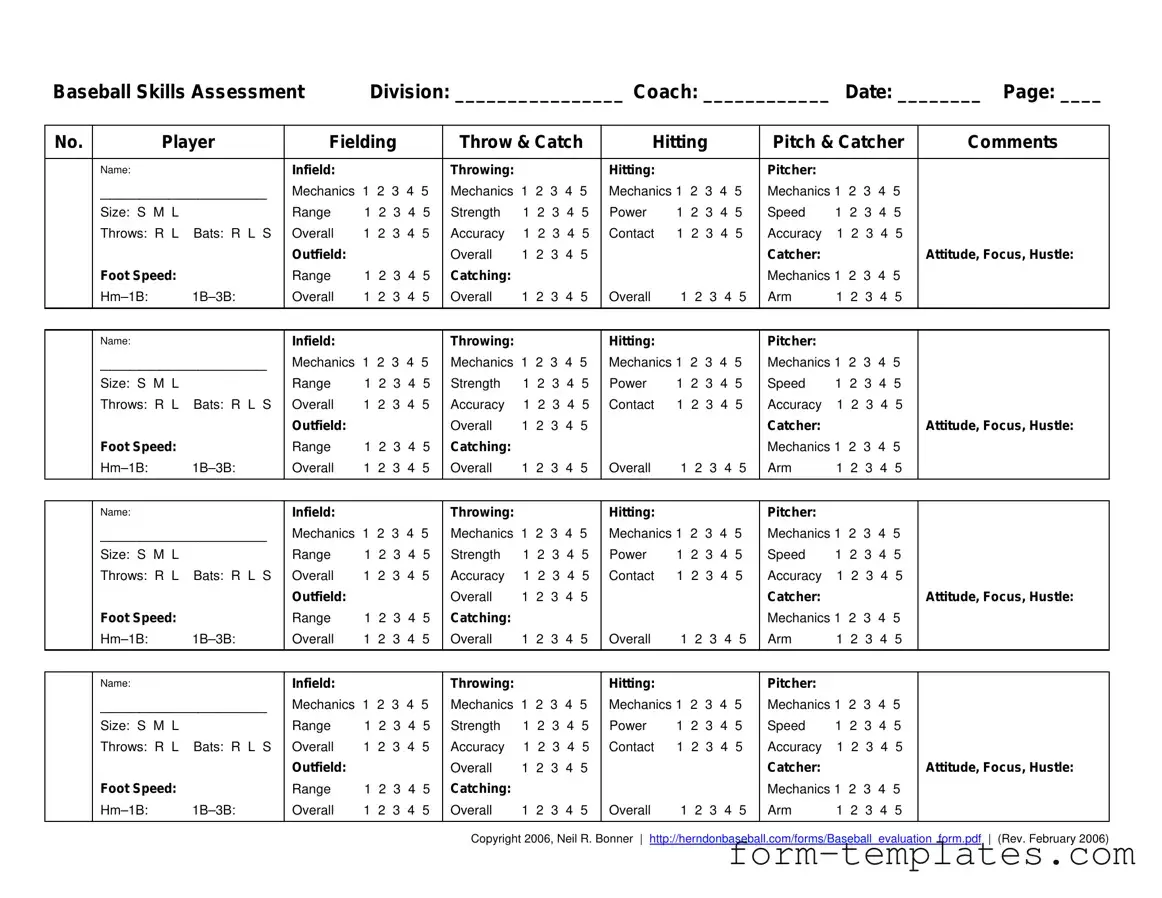The Baseball Assessment form is designed to evaluate players' skills in various aspects of the game. Coaches use this standardized tool during tryouts to assess abilities in areas such as fielding, throwing, hitting, and pitching. This helps ensure a fair selection process for team placements, especially for All-Star travel teams and house leagues.
The scoring system uses a five-point scale. A score of five indicates exceptional ability, while a score of one reflects extremely poor performance. Scores of two, three, or four represent varying levels of skill in between. Coaches assign scores in categories like infield, outfield, throwing, and hitting, allowing for a comprehensive evaluation of each player's capabilities.
What categories are included in the assessment?
The assessment covers several key categories:
-
Fielding (infield and outfield)
-
Throwing and catching
-
Hitting (mechanics, power, contact)
-
Pitching skills
-
Overall attitude, focus, and hustle
-
Speed and range
This thorough approach ensures that coaches can make informed decisions based on a player's overall performance.
How long do tryouts typically last?
Tryouts usually take between two to two and a half hours. This timeframe allows for a structured evaluation of each player's skills, including warm-ups, various drills, and breaks. Coaches can effectively assess players' abilities within this timeframe while keeping the process engaging and organized.
What should players expect during the tryouts?
Players can expect a series of activities designed to showcase their skills. The tryouts will include warm-up exercises, base running assessments, and evaluations of infield and outfield skills. Players will also have the opportunity to demonstrate their hitting abilities and, if interested, their pitching or catching skills. The environment will emphasize the importance of attitude and hustle throughout the process.
How are players selected for the team?
Selection begins with the quantitative scores from the assessment. The first eight players are chosen based on their scores across various categories. The All-Star manager then selects additional players for the team using their discretion, which may include factors like teamwork and potential. This combination ensures a balanced and competitive team.
Can coaches adjust scores based on specific criteria?
Yes, coaches have the flexibility to adjust scores based on specific criteria. For example, they may award additional points for exceptional speed during base running or deduct points for slower times. Coaches can also consider a player's attitude, focus, and hustle, adding or subtracting points as they see fit. This allows for a more personalized evaluation process.
The Baseball Assessment form can be accessed online at the Herndon Baseball website. It is available for download, allowing coaches to print and use it during tryouts. This ensures that all evaluations are conducted using the same standardized format, promoting fairness and consistency in the selection process.

